Hiking Stick : A Complete Guide To Choosing A Proper Hiking Stick
Hiking is an exhilarating way to explore nature, challenge our bodies, and experience breathtaking views. But to make the most of your adventures, having the right gear is essential. One piece of equipment that often gets overlooked is the hiking stick. A good hiking stick can significantly improve your hiking experience by providing stability, protecting your joints, and conserving energy. In this comprehensive guide, we’ll explore the benefits of hiking sticks, share expert recommendations, and delve into the features you should consider when choosing the hiking stick for 2023. So let’s get started on your journey to finding the perfect hiking stick!
Short Summary
- Hiking sticks provide stability, balance and energy conservation for hikers.
- Expert recommendations and trustworthiness are essential when selecting the optimal hiking stick for 2023.
- Proper cleaning, drying, inspection of locks & tips ensure longevity of your hiking stick.
Understanding the Benefits of Hiking Sticks
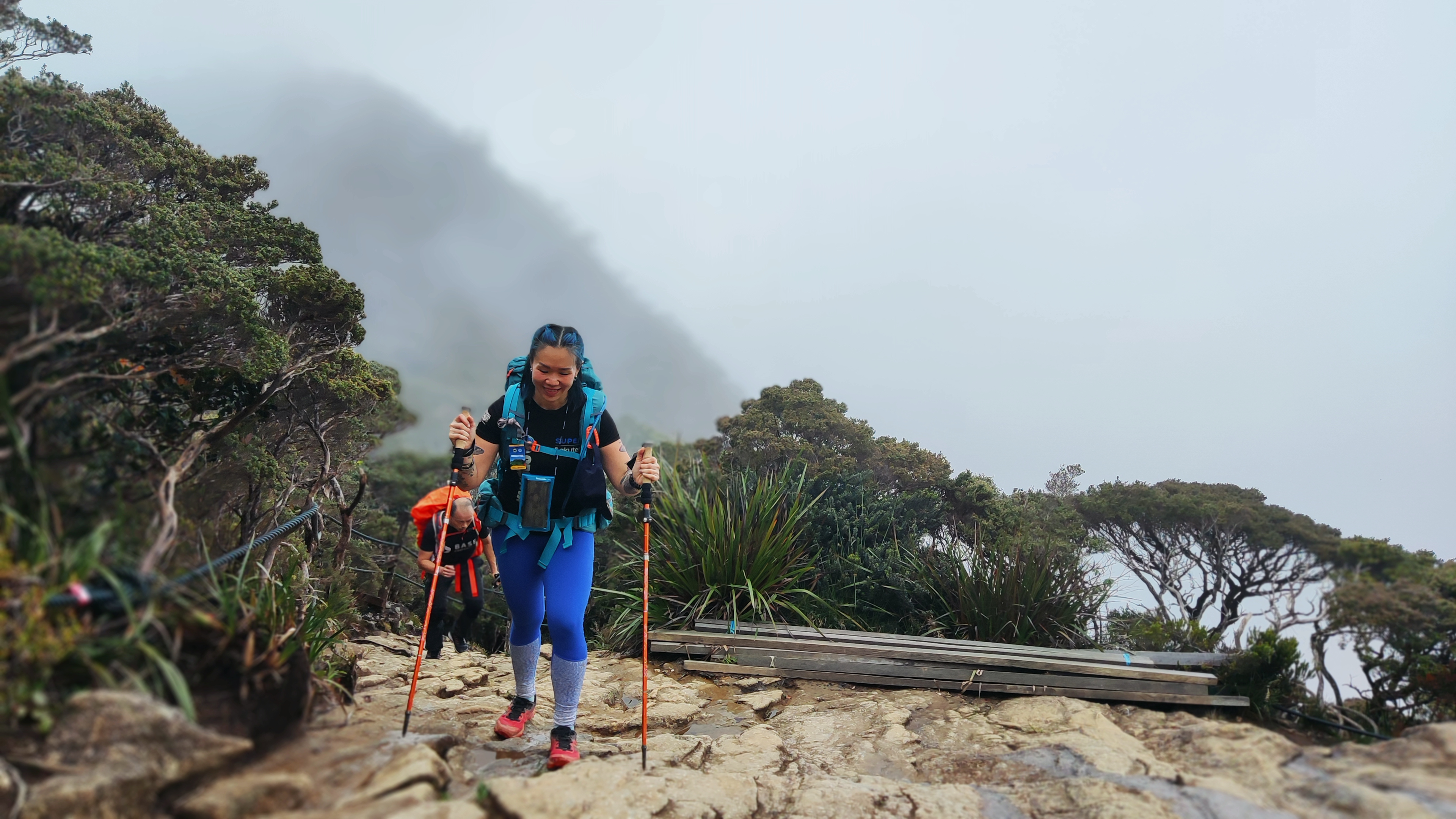
Hiking sticks, also known as trekking poles or walking poles, offer numerous advantages to both casual and serious hikers alike. They provide stability and balance on uneven terrain, safeguard joints from the impact of each step, and help hikers conserve energy during long treks. The weight of your hiking stick is an important consideration, as lighter poles are ideal for mountain running and ultralight backpacking.
It’s also essential to choose a durable hiking stick, and the two most common materials are carbon fiber and aluminum. Carbon fiber poles are highly durable when loaded correctly along the pole’s axis, but can break when subjected to bending or impact forces. On the other hand, aluminum poles may bend when exposed to heavy loads, but generally show more flexibility before breaking.
The ideal hiking stick should be a balance of weight, durability, and material to ensure you have the right support for your outdoor adventures.
Stability and Balance
The primary purpose of a hiking stick is to provide stability and balance, which can help prevent falls and injuries as well as enhance one’s ability to traverse challenging terrain. Hiking sticks achieve this by providing support on uneven terrain, reducing the impact on joints, and increasing the efficiency of movement. This is particularly beneficial when hiking on steep or rough terrain, where maintaining balance is crucial.
In addition to providing stability and balance, hiking sticks can also act as a third or fourth leg, supporting your body as you navigate obstacles and steep inclines. This extra support can be especially helpful for those with existing joint or balance issues, making their hiking experience safer and more enjoyable.
Joint Protection
Joint protection is another significant benefit of using hiking sticks. By reducing the force of impact on your lower body joints, particularly knees, ankles, and hips, you can minimize the risk of injury and enjoy a more comfortable hiking experience. This is especially crucial for those with a history of joint problems or who are susceptible to joint pain.
To ensure joint protection while hiking, it is advisable to wear appropriate footwear, maintain a slightly bent knee position, utilize trekking poles, and contemplate wearing a knee brace or elastic knee sleeve for extra support. By taking these precautions, you can maintain healthy joints and hike with confidence, knowing that you’re less likely to suffer from joint-related issues.
Energy Efficiency
Hiking sticks can also help conserve energy by providing support during uphill and downhill sections of your hike. This is particularly important for those tackling long distances, as conserving energy allows you to hike further and more comfortably. The type of grip material used on your hiking stick can also play a role in energy efficiency, with cork being the optimal choice for hot weather, and rubber being the best choice for cold weather activities.
Z-poles, or collapsible poles, offer the benefit of being more compressible and easier to stow away in a backpack, making them an ideal choice for technical expeditions or for users who wish to have the option of storing their poles in or outside of a backpack.
With the right hiking stick and proper technique, you can conserve energy and enjoy a more efficient hiking experience.
Expert Recommendations and Trustworthiness
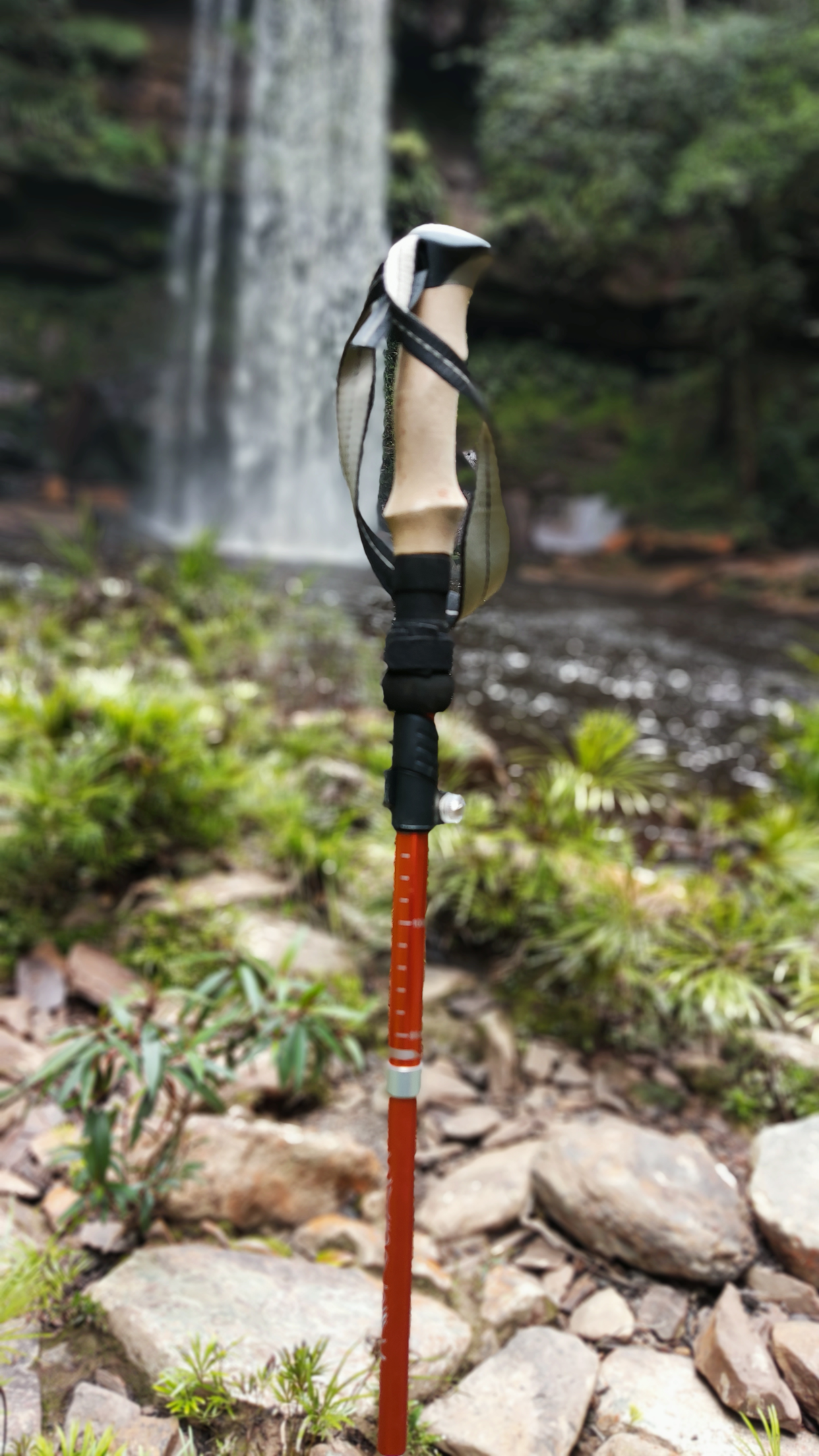
Usability and packability are essential factors to consider when selecting the optimal set of poles, as they ensure that the poles are comfortable and convenient to use. By understanding the nuances of different hiking stick features, materials, and designs, and incorporating expert insights, you can make a well-informed decision and select the ideal hiking stick for your needs and preferences.
Author’s Experience
Our experience with hiking stick has allowed us to gain invaluable insight into what to consider when choosing a hiking stick and how to use it to maximize balance and stability. We’ve tested various hiking sticks in Malaysia across multiple terrains, including hard dirt, soft dirt, sand, sandstone, beach, and the foothills of the tropical forest.
You can watch our testing videos here in Youtube:
3 COMMON MISTAKES OF USING HIKING POLE! – YouTube
The Best Hiking Stick for Your Needs: Our Top Picks – YouTube
Evaluating Hiking Stick Features
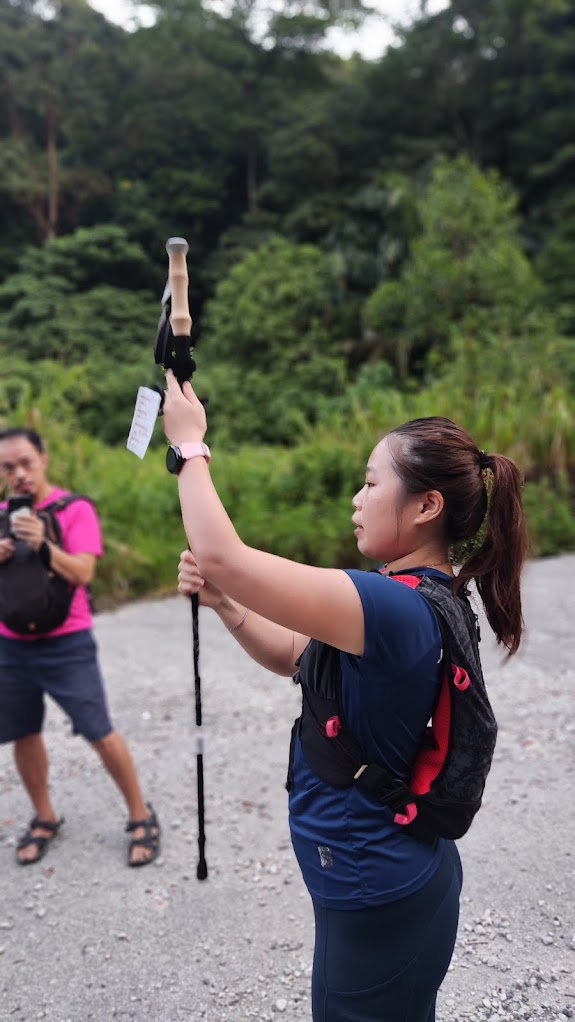
When selecting a hiking stick, it’s important to evaluate several key features, including adjustability, weight, and locking mechanisms. Each feature plays a crucial role in ensuring that your hiking stick is comfortable, convenient, and effective for your needs. In this section, we’ll discuss these features in detail, and provide guidance on what to look for when evaluating different hiking sticks.
It’s also crucial to consider the materials used in the construction of your hiking stick. The two most common materials are aluminum and carbon fiber, each with its own advantages and disadvantages. Understanding the differences between these materials and their impact on durability and weight will help you make an informed decision when selecting the hiking stick for your needs.
Adjustability and Locking Mechanisms
Adjustable and collapsible poles are often recommended for their versatility, allowing you to customize the length of the poles to suit your height and the terrain you’re traversing. There are several types of locking mechanisms available for trekking poles, including external lever lock, push-button lock, twist lock, and combination lock.
Flick locks, for example, are the most convenient and user-friendly adjustment mechanism for hiking poles. When choosing a hiking stick, it’s important to select a model with a locking mechanism that is easy to use and secure, ensuring that your poles remain at the desired length throughout your hike.
Materials and Durability
The materials used in the construction of your hiking stick play a significant role in its durability and weight. Aluminum is the most common material used in hiking sticks and offers a balance of durability and lightness, with a weight range between 500 and 800 grams per pair. Carbon fiber, on the other hand, is the lightest material but is more prone to breakage or splintering than aluminum.
When selecting a hiking stick, it’s important to choose one made from a durable and lightweight material that best suits your needs. This will ensure that your hiking stick provides the support and stability you need while remaining comfortable to carry throughout your hike.
Grip Comfort and Materials
Grip comfort is an important factor to consider when selecting a hiking stick, as it can significantly impact your overall hiking experience. Cork is the most popular material for grip comfort due to its moisture-resistant properties, making it an ideal choice for hot weather hikes. Other grip materials include foam and rubber, each offering their own benefits and drawbacks in terms of comfort and durability.
When choosing a hiking stick, it’s important to select one with a grip material that is comfortable and suited to the conditions in which you’ll be hiking. By ensuring that your hiking stick has a comfortable grip, you’ll be able to use it more effectively and enjoy a more pleasant hiking experience.
Top Hiking Stick Picks for Different Needs
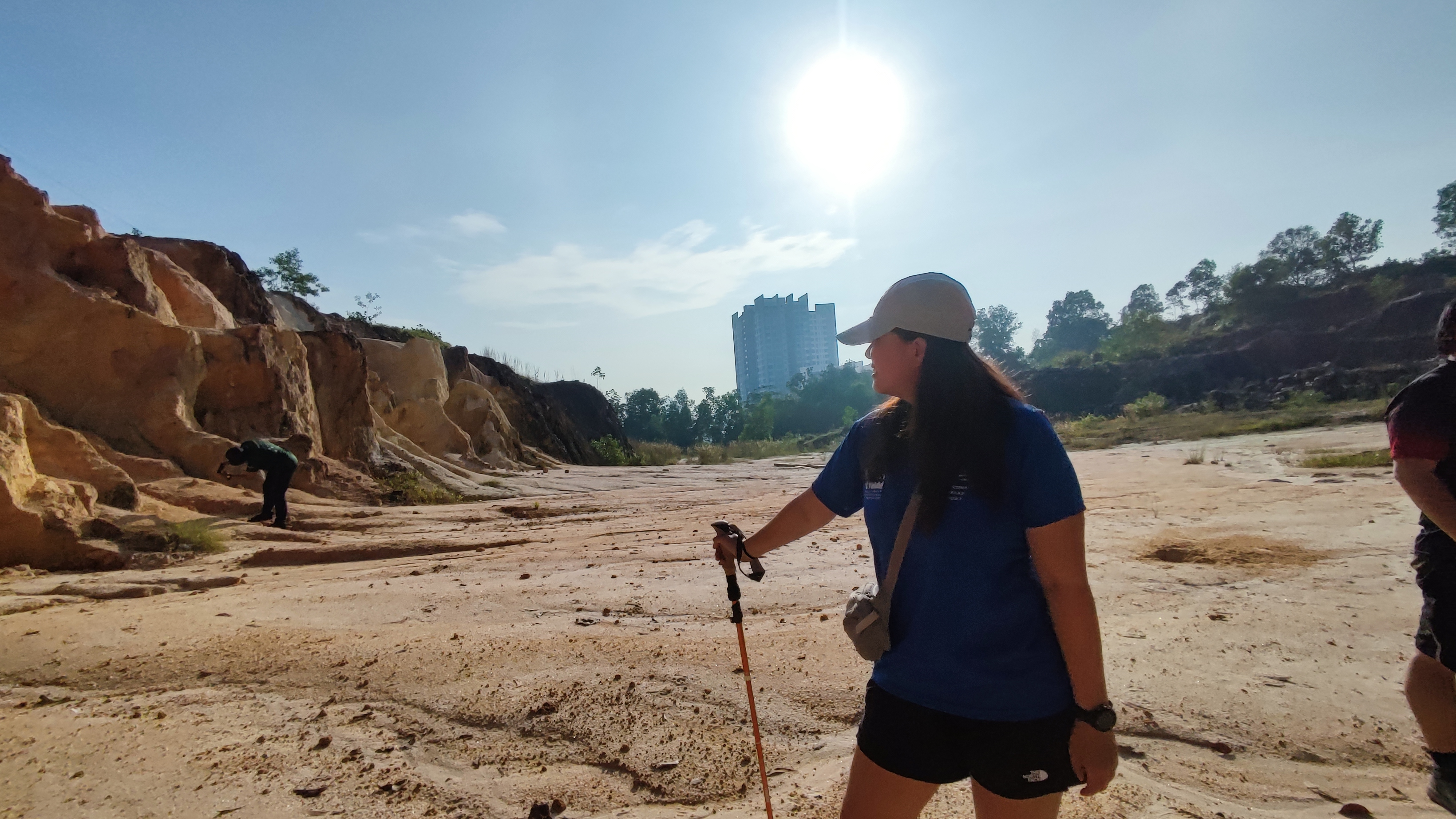
Now that we’ve discussed the benefits of hiking sticks, the features to evaluate, and the importance of expert recommendations, it’s time to explore our top picks for different needs. In this section, we’ll provide recommendations for the best overall hiking stick, the best budget hiking stick, and the best ultralight and collapsible hiking stick.
These recommendations are based on our extensive experience, research, and consultations with experts, ensuring that you have the most reliable and trustworthy information to make the best decision for your needs.
Best Overall Hiking Stick
Our top pick for the best overall hiking stick is the Black Diamond Trail Ergo Cork. This reliable hiking stick boasts comfortable cork grips, secure FlickLock+ levers, and a robust construction that is suited for various hiking conditions. Its ergonomic design ensures that your wrists remain in a neutral and comfortable position, reducing the risk of strain or discomfort during your hike.
While the Black Diamond Trail Ergo Cork is slightly heavier than other poles, its dependable locking mechanism and sturdy construction make it an excellent choice for those seeking a reliable and comfortable hiking stick. Whether you’re a casual hiker or a seasoned adventurer, the Black Diamond Trail Ergo Cork is our top recommendation for the best overall hiking stick.
This is one that will beat the hiking stick Decathlon that you commonly get in market.
Best Budget Hiking Stick
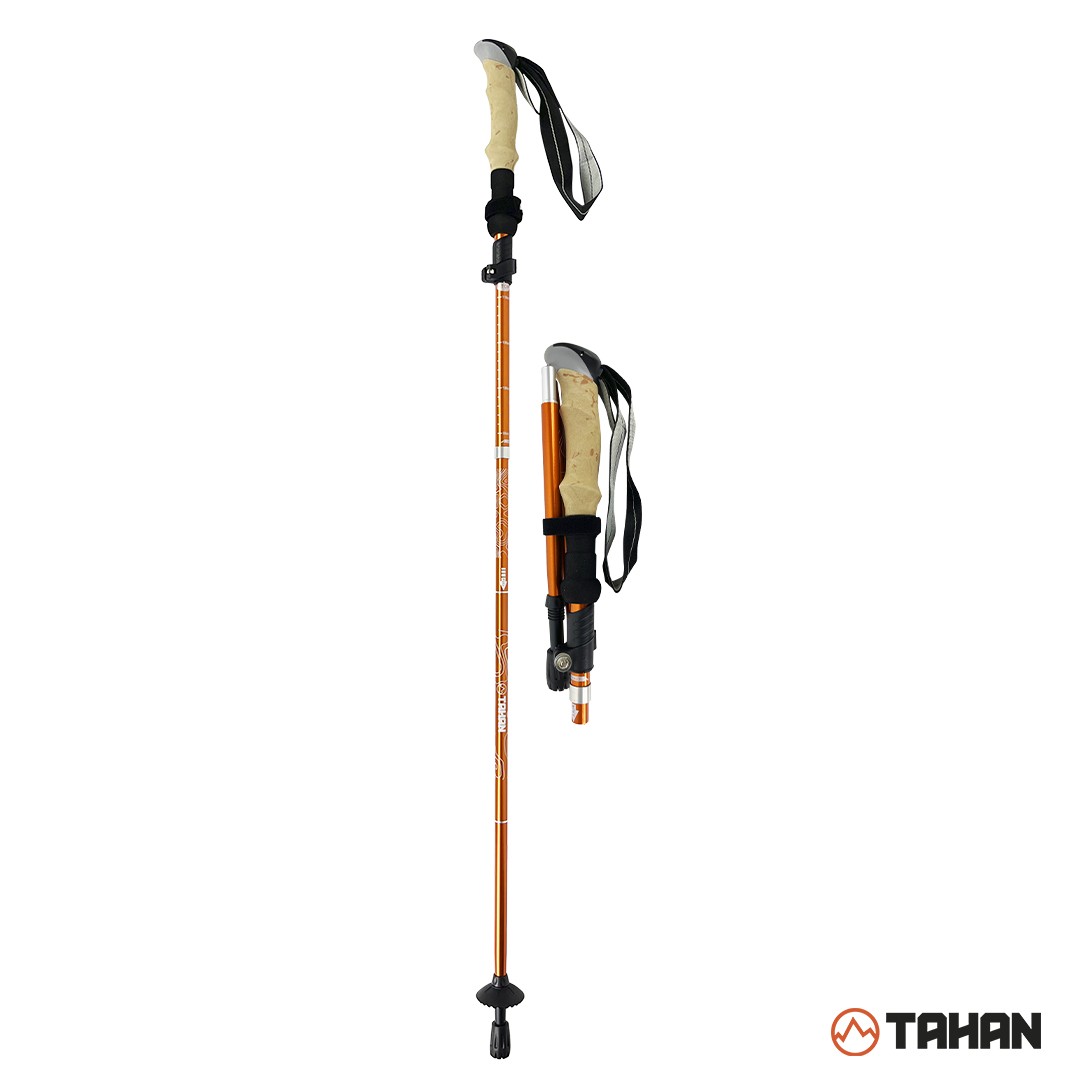
For those seeking a more budget-friendly option, we recommend the TAHAN 3-Section Hiking Pole. Priced at just RM79 ($20), this adjustable hiking stick offers a wide range of lengths, from 95cm to 110cm, making it suitable for a variety of users. Although it may not have all the premium features of more expensive alternatives, the TAHAN 3-Section Hiking Pole provides a solid performance at an affordable price.
It’s important to note that the lower price does come with some sacrifices in terms of durability and premium features. However, for those on a budget, the TAHAN 3-Section Hiking Pole is a great option that provides a reliable and adjustable hiking stick without breaking the bank. One thing for sure, we find it much better than hiking stick Mr DIY
Best Ultralight and Collapsible Hiking Stick
If you’re in search of the lightest and most compact hiking stick, look no further than the Black Diamond Distance Carbon Z. This ultralight hiking stick features Z-Pole technology, allowing it to collapse to 10 inches shorter than most telescoping designs. Constructed from carbon fiber, the Black Diamond Distance Carbon Z is incredibly lightweight, making it ideal for those who prioritize weight savings and packability.
The Black Diamond Distance Carbon Z is available in four different lengths and is well-suited for lightweight backpacking, hiking, trail running, and approaching technical climbs. While its foam grips may not be the most comfortable, they are sufficient for most users.
If you’re looking for the best ultralight and collapsible hiking stick, the Black Diamond Distance Carbon Z is our top recommendation. This is not a hiking stick sports direct that you can purchase locally, but we have linked it for you.
Using Your Hiking Stick Effectively

Now that you’ve chosen the perfect hiking stick for your needs, it’s important to learn how to use it effectively to maximize its benefits. In this section, we’ll discuss proper length and adjustment, walking technique, and navigating obstacles with your hiking stick. By mastering these skills, you’ll be able to make the most of your hiking stick and enjoy a safer and more enjoyable hiking experience.
Using your hiking stick effectively involves understanding the proper length and adjustment for different types of trekking, uphill and downhill sections, and traversing. Additionally, practicing good walking technique and navigating obstacles with the help of your hiking stick can greatly improve your overall hiking experience.
Proper Length and Adjustment
To ensure optimal performance, adjust the length of your hiking stick so that your arm forms a 90-degree angle at the elbow when the pole tip is placed on the ground near your foot. This adjustment will vary depending on the terrain and your height. For general hiking, use the recommended length based on your height.
When going uphill, you may want to lengthen each pole by approximately 5-10 cm from the length set for general hiking to provide additional support. Conversely, when going downhill, it is recommended to shorten your hiking stick to provide better stability.
By adjusting your hiking stick to the appropriate length for each situation, you can ensure that it provides the necessary support and stability, allowing you to hike more comfortably and confidently.
Walking Technique
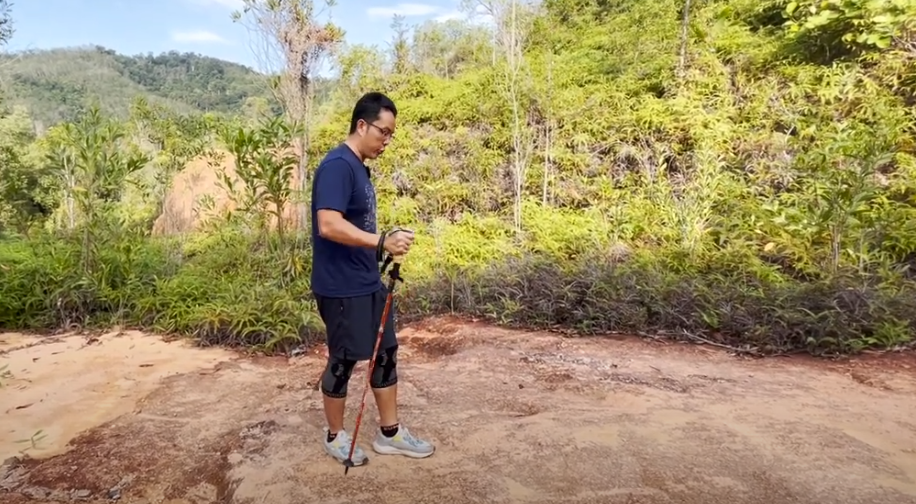
When walking with a hiking stick, it’s important to maintain a steady cadence and equilibrium by coordinating the movement of the hiking stick with the opposite foot. This technique ensures even weight distribution and a natural walking rhythm. To reset your rhythm if you’ve fallen out of sync, simply lift the poles off the ground for a moment and then resume planting them when you’re ready.
Another important aspect of walking technique is maintaining a slight angle in your posture to ensure proper balance and even weight distribution. By practicing these walking techniques with your hiking stick, you’ll be able to hike more efficiently and enjoyably.
By the way, we created a video on this as well:
Navigating Obstacles

Hiking sticks can be incredibly helpful when navigating obstacles, such as stream and river crossings, puddles, large rocks, and logs. To do so, use your hiking stick to assess the stability of the ground before stepping on it, ensuring that you avoid slips or falls and identify potential hidden hazards. Planting both poles forward when going over obstacles can also provide support for your knees and additional security in case of an unexpected landing.
By utilizing your hiking stick effectively to navigate obstacles, you can maintain balance and stability during challenging terrain, making your hiking experience safer and more enjoyable.
Caring for Your Hiking Stick
Taking good care of your hiking stick is essential to ensure its durability and performance. Regularly cleaning and drying your hiking stick, inspecting locks and tips for signs of wear and tear, and replacing any worn parts can help keep your hiking stick in good condition.
In this section, we’ll provide guidance on how to clean and dry your hiking stick, inspect its locks and tips, and maintain its overall condition. By following these caring tips and regularly inspecting your hiking stick, you can ensure that it remains in top condition and continues to provide the support and stability you need during your hikes.
Cleaning and Drying
To clean your hiking stick, simply wipe it down with a damp cloth after each use, avoiding the use of harsh chemicals or soaking the handle in water. For wooden walking sticks, regular oiling is advised, and if your stick has a varnish finish, natural colored shoe polish may be used to polish it.
After cleaning your hiking stick, make sure to dry it completely before storing it to prevent any damage or deterioration. Proper cleaning and drying not only help to maintain the appearance of your hiking stick, but also ensure its longevity and performance. By keeping your hiking stick clean and dry, you can enjoy its benefits for many hikes to come.
Inspecting Locks and Tips
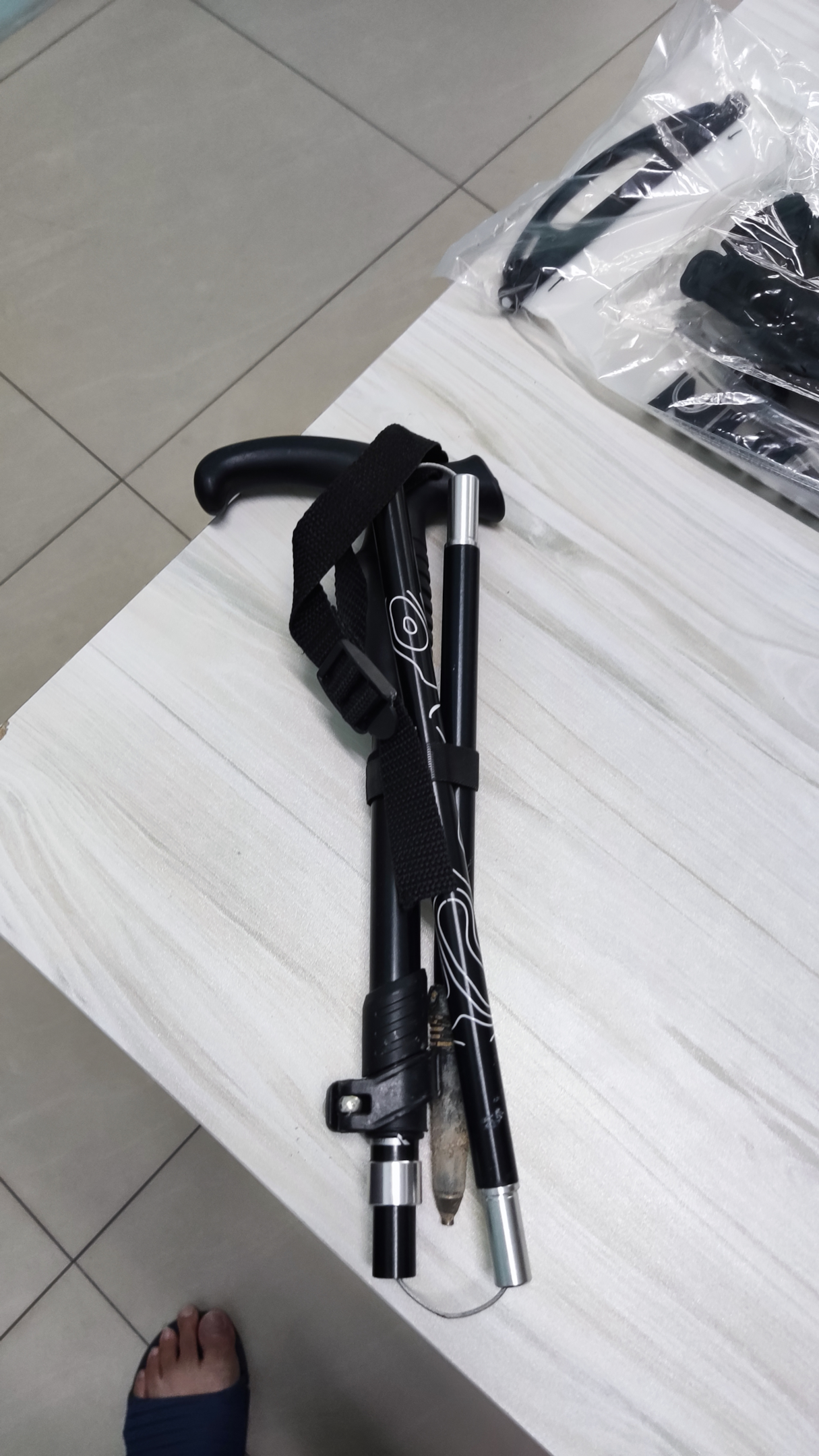
Regularly inspecting the locks and tips of your hiking stick is crucial to ensure its continued performance and safety. Check for any signs of wear and tear, such as loose or damaged locks, worn or cracked tips, and any noticeable damage to the pole itself. If you find any issues during your inspection, it’s important to address them promptly, either by tightening or replacing the locks, replacing the tips, or repairing any damage to the pole.
By routinely inspecting your hiking stick and addressing any issues as they arise, you can ensure that your hiking stick remains in optimal condition and continues to provide the support and stability you need during your hikes.
Customizing Your Hiking Stick
Customizing your hiking stick can enhance its comfort, ease of use, and adaptability to your specific needs and preferences. Wrist straps, baskets, pole tips, and attachments are all available options for customizing your hiking stick, allowing you to create a hiking stick that is tailored to your needs and preferences.
In this section, we’ll explore these customization options in more detail, providing guidance on how to choose the best options for your hiking stick. Whether you’re looking to improve the comfort of your hiking stick or add versatility with different attachments, customizing your hiking stick can help you create the perfect tool for your hiking adventures.
Wrist Straps and Baskets
Wrist straps and baskets are accessories that can be affixed to your hiking stick to enhance comfort and ease of use. Adjustable wrist straps provide support and comfort by ensuring that your wrist remains in a comfortable position during your hike. Snow baskets can be added to your hiking stick to prevent it from sinking into deep snow, while mud baskets help prevent the pole from sinking into muddy terrain.
By adding wrist straps and baskets to your hiking stick, you can improve its comfort and convenience, making your hikes more enjoyable and less tiring.
Pole Tips and Attachments
Pole tips and attachments can greatly enhance the versatility of your hiking stick. Rubber tips can be added to your stick for use in delicate environmental areas, while carbide or steel tips offer improved traction on icy surfaces. Snow and mud baskets can be added to prevent your hiking stick from sinking into deep snow or mud, while camera mounts can be added to turn your hiking stick into a convenient, hands-free photography tool.
By customizing your hiking stick with different pole tips and attachments, you can create a versatile tool that caters to your specific needs and preferences, ensuring that you’re well-equipped for any hiking adventure.
Summary
In conclusion, hiking sticks are an invaluable piece of equipment for any hiker, providing stability, joint protection, and energy efficiency. By considering factors such as adjustability, locking mechanisms, materials, and grip comfort, you can choose the hiking stick for your needs. Our top picks for different needs, expert recommendations, and guidance on using and caring for your hiking stick will help you make an informed decision and ensure that you have the perfect hiking stick for your adventures. So go ahead, select the hiking stick for your needs, and embark on a more enjoyable and safer hiking experience!
Frequently Asked Questions
What is a hiking stick called?
Hiking sticks, also known as trekking poles or walking poles, are essential items used by hikers to provide stability while navigating uneven ground. These poles come in pairs, and can be used to help you balance on difficult terrain or move faster on flatter surfaces.
What is the point of a hiking stick?
A hiking stick is an essential piece of hiking equipment that helps provide balance and stability when navigating uneven terrain. It also offers extra support for carrying a heavy pack, and can be used to test depths in creeks or when crossing snow fields.
Ultimately, it can make your hikes safer and more comfortable.
Should you hike with a stick?
Based on the advice given, it is best to use a hiking stick when facing terrain that can be difficult or unstable. A hiking stick can provide better balance and stability, particularly in uneven or wet terrain.
Therefore, you should hike with a stick if you anticipate facing challenging conditions.
What is the difference between trekking poles and hiking sticks?
Trekking poles, also known as walking sticks or hiking poles, are standard equipment for many walkers, hikers, trekkers, backpackers, and snowshoers, whereas a hiking staff or hiking stick is a single pole.
Trekking poles provide added stability and support while traversing various types of terrain, while hiking sticks are typically used for balance on flat surfaces.
What is the difference between hiking poles and trekking poles?
The primary difference between hiking poles and trekking poles is that hiking poles are usually used as one single pole, whereas trekking poles are commonly used in pairs. Trekking poles provide extra stability and support on difficult terrain, making them an ideal choice for backpackers, hikers, walkers, and snowshoers.
Disclaimer: At PTT Outdoor, we curate good products and reviews based on our previous experiences with equipments. If you ever google “hiking stick near me” or “hiking stick malaysia”, you might see us in the search result, so feel free to support us or be in touch with us.


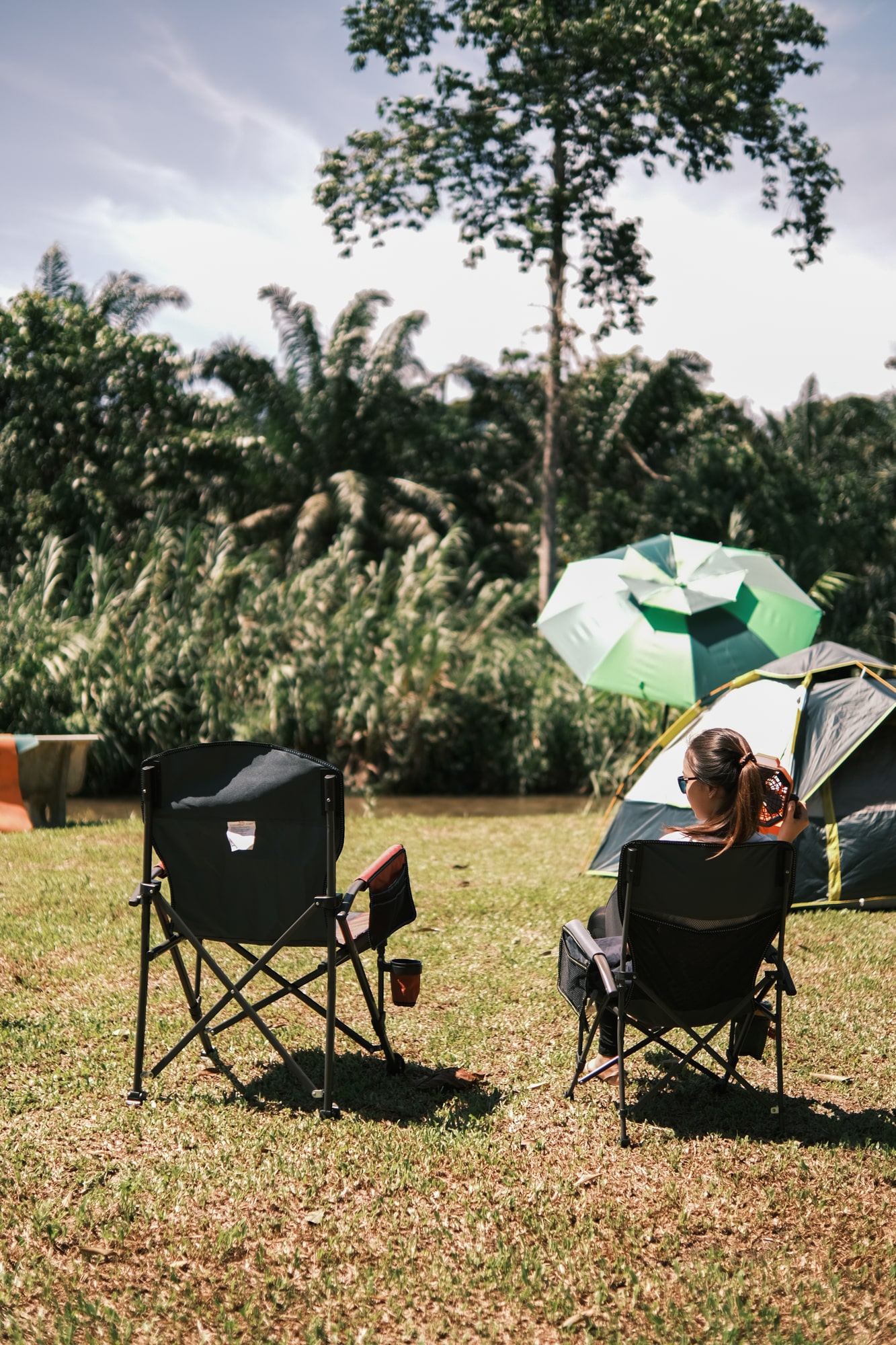
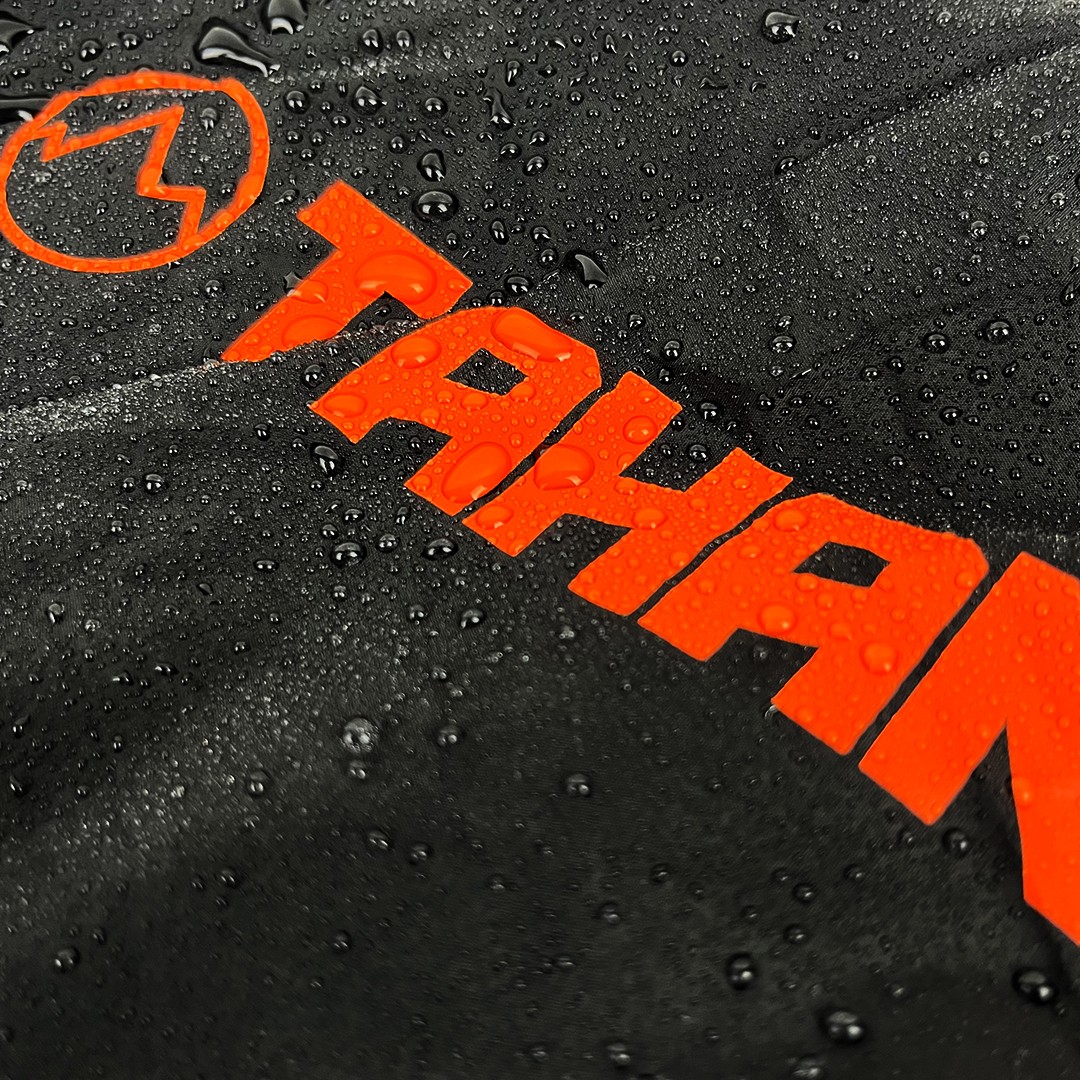



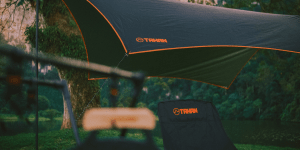
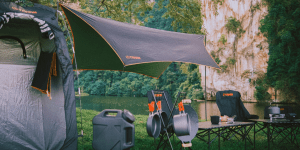

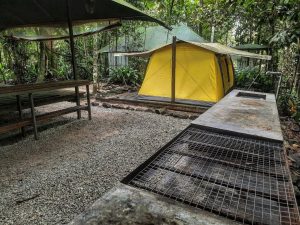


1′”
1